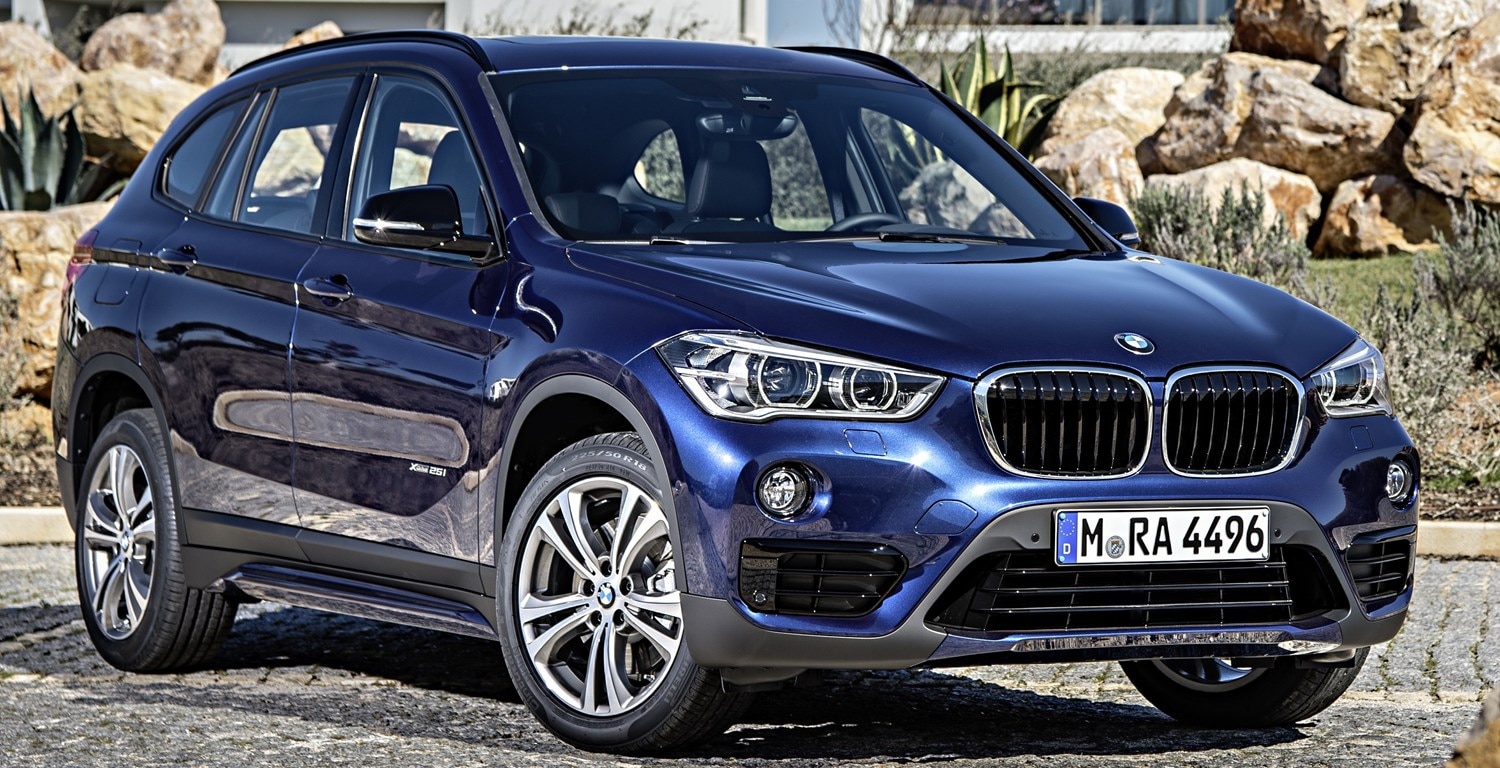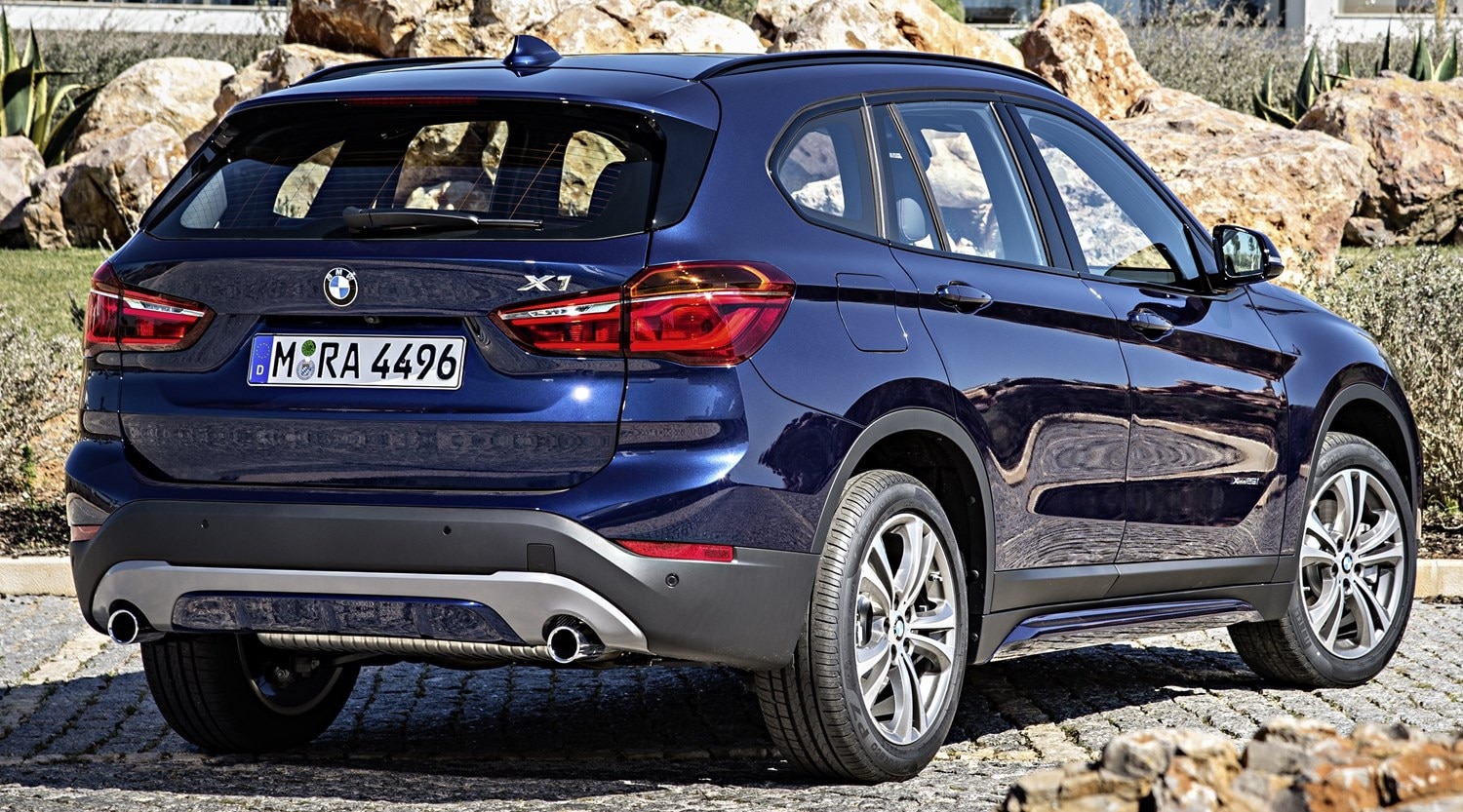Model Review
The sector of the market that is currently booming is that of the SUV/Crossover. More models are being unveiled every year as people look to have more practicality and the look of an adaptable off-roader.
BMW’s effort for the compact end of the market came in 2009 in the shape of the X1, which had similarities with the brand’s 1 Series in terms of looks, but was a bit beefier and built up for potential off-roading.
As the baby of BMW’s SUV line-up, it was clearly never going to be as practical as its larger siblings but did well when it competed against its market rivals.
The new version, which was introduced in 2015, brought a much altered but distinct BMW look and was much more gainly the first version.
Latest Model
Brought in towards the end of 2015, the second generation X1 was seen as a decent evolution for the crossover, as the looks had a marked improvement and it grew slightly to make it more practical than before.
A major issue for the X1, however, was that the price jumped by £3,000 in between generations, which is quite a leap considering many of its cheaper rivals did just as good a job but undercut the X1 considerably on price.
What the X1 does have on its side is a premium feel and with the BMW badge comes good standard features and at least a decent attempt at a strong driving experience.
With plenty of improvements needed over the first generation – which wasn’t great to drive, cramped and very disappointing on the whole – BMW look to be on par with the Audi Q3 and Mercedes GLA who are cornering the small SUV market.
Value for money
The cost of the X1 has been increased considerably for the second generation and that may push some people away from it. But you do get plenty of accessories with it so it can compete with its German rivals, such as electrically folding rear seats two-zone automatic air conditioning, cruise control with braking function, Bluetooth hands-free and media streaming, BMW ConnectedDrive services, multi-function leather sport steering wheel and park distance control.
As well as a lot of other quality accessories, the X1 has been given a new range of more efficient engines making it a much better proposition than before. The second gen X1 starts from £27,990 for the SE model, which is a leap from the previous version, but does mean high-spec used models of the current generation can undercut it.
If you’re looking for a high-spec X1 but don’t want to pay the rather high starting price, there are low-mileage options on the used market that are cheaper. One such example is a 2015 xLine model, which is fitted with a 2.0-litre 228bhp diesel and the xDrive all-wheel drive system.
Also included in this model is heated front seats, BMW’s performance control system, powered tailgate, automatic sports transmission, xLine package and leather interior trim. With only 3,555 miles on the clock in its two years, it hasn’t been pushed hard at all and with a price of £27,475 it is not only cheaper but better equipped as well.
Looks and image
One noticeable improvement with the X1 is how it looks and the exterior is definitely more appealing than with the first generation. It looks more muscular than before and fits in with the rest of the BMW ‘X’ range with sharper lines and a beefier front end.
The grille has also been improved to fit in with the rest of the design and is a much more pleasing prospect in the premium crossover segment. The interior is quite interesting also, with little touches of personality here and there with the colourful band across the dash and contrast stitching. But everything is as you were in BMW terms, with everything in the right place and of a sturdy build.
Something that BMW is very good at is making its cars drive very well no matter the size and shape and in the X1 guise, the German brand has done another very good job. The steering is well-weighted throughout the speed range – lighter feel at the bottom end and a heavier, more assured feel at higher speeds – and precise when cornering, although it can be lacking in feedback.
Body roll has been kept under wraps as well and despite a high stance and riding position, you don’t feel like you get swamped in the corners. The adaptive suspension also helps with overall driving feel.
Fitting the adaptive suspension does make a lot of difference to how the car feels in terms of comfort. With it applied the X1 can soak up the bumps in comfort mode and feel dynamic when needed.
The standard suspension does well also but isn’t as composed overall as the adaptive suspension, so that is an option well worth looking at. Another big improvement on the previous generation is the rear passenger space and taller adults are now able to sit in the back with plenty of head and legroom to spare.
Space and practicality
The X1 is a class leader in terms of boot size and practicality, which is another major improvement on the MkI X1. A boot space of 505 litres, which extends to 1,550 litres with the rear seats folded, is much better than all its premium crossover rivals.
The rear seats can be folded down electrically with a switch in the boot and the front passenger seat can be folded down as well to offer a two-metre long load space. There are plenty of storage spaces and solutions throughout the cabin, including under-seat spaces and door pockets.
Safety-wise, the X1 performs very well by scoring five stars on the Euro NCAP and rated highly in all areas of the testing process – including a 90 per cent rating on adult safety, a child occupant rating of 87 per cent and a safety assist score of 77 per cent.
Safety systems fitted as standard include active guard with front collision warning, park distance control and cruise control with brake assist. Optional safety features are available, such as the driving assistant plus package, adaptive LED headlights and reversing assist camera, but they can come at an extensive premium if you fit too many of those options.
For families the X1 is an expensive but good option to choose as there is a large amount of space, a good safety rating and Isofix fixture points on the rear seats. Although the car is more expensive than before and other cheaper crossovers will do a similar job, the X1 is a much more refined vehicle than many others and can certainly be described as a good family car.
Engines
BMW offers one petrol unit – a 2.0-litre with 189bhp – and three diesel options for the X1 and only the diesel engines are available with manual gearboxes – petrol models only get automatic transmissions. Realistically the diesel engines will be the ones to look at, as they are more economical and have the torque to deal with less grippy surfaces if you choose to go off-road.
Despite being the smallest of the three, the 18d unit can achieve upwards of 55mpg with either front or four-wheel drive and can keep up with the 20d and 25d units. In fact, all of the diesel options with sDrive or xDrive can attain over 50mpg and can perform at a good standard with either 150bhp, 190bhp or 231bhp at their disposal. The petrol 20i model does have 192bhp and is as quick as the mid-level diesel, but it feels unnecessary as the diesels are much better suited to the X1’s standing and overall function.
Running costs
In terms of fuel usage, the petrol doesn’t even get close to the much more frugal and lower emitting diesels, which are coincidentally cheaper to insure also as models fitted with petrol power units are roughly two insurance groups higher than those fitted with the comparative diesel. Road tax-wise the cheapest diesel comes into the £140 bracket for the first year, while the 20d slots into the £160 range and the top diesel costs £200 to insure for the first 12 months. The petrol is the most emitting by a long way and also is in the £200 section for road tax.
Things to look out for
BMW does have a surprisingly patchy reliability record – considering the brand’s standing – but the X1 has done well to avoid anything major. The only main issue came towards the end of the life of the first generation in 2014, with some being affected by the engine’s emergency mode activating during driving. On the whole, however, there were many reports of X1s suffering quite a lot of reliability issues away from the recalls, which may concern some.
Rivals
The BMW does have issues in terms of rivals, as its closest compatriots are the Audi Q3 and Mercedes-Benz GLA – in terms of both pricing and performance – but is also undercut by many more mainstream rivals in the guise of the Ford Kuga, Kia Sportage and the nation’s favourite Nissan Qashqai.
The X1 is of a high quality when compared to the Ford, Kia and Nissan, although the gap in quality to the German hierarchy in the sector is shrinking. The Range Rover Evoque does also cut into the X1’s market share and is more economical to run, although it is more expensive.
Depreciation warning
The X1 doesn’t perform as well as its larger siblings in the ‘X’ range on the used market but some models can achieve around 50 per cent of its original value due to the ever-growing popularity of the crossover and BMW’s reputation.





